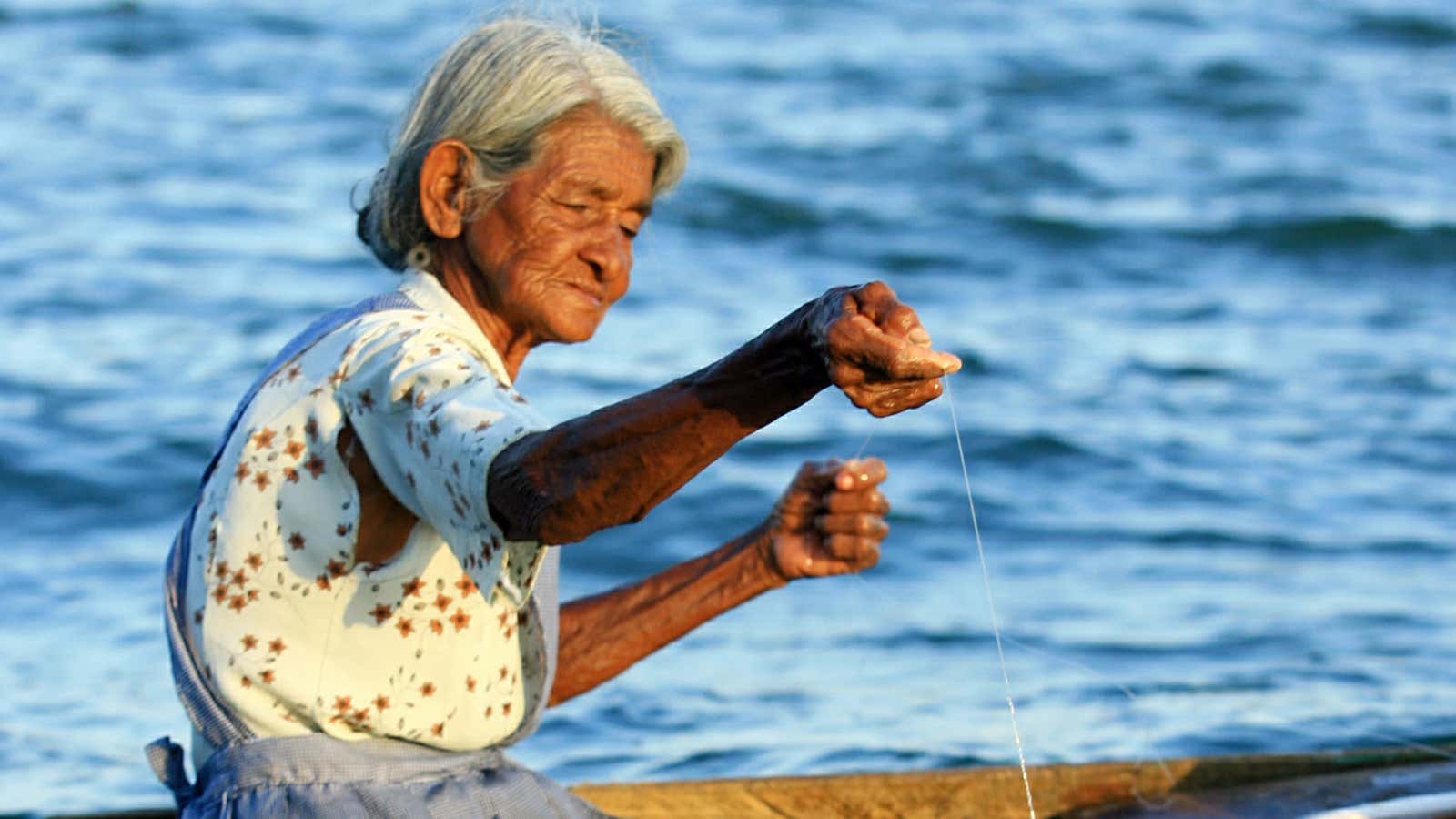Get rich and not only can you buy a fancy car; you can probably afford a longer life, right? After all, in the US, wealthy elderly live 5% to 10% longer than poorer seniors. Not so in the case of Costa Rica. As it turns out, the country is home to one of the five global pockets of extreme longevity (the others are in Italy, Greece, Japan and the US). And new scientific research suggests that the area’s residents don’t live long in spite of their penury; they’re still kicking because of it.
The studies involve residents of the Nicoya Peninsula, in the northwest. A remote area where the Chorotega people intermarried with Spanish settlers long ago, its isolation has kept tourists and other industries at bay.
Nicoya is impoverished even by Costa Rican standards, which are lower than the other four countries to begin with. For instance, in 2012, GDP per capita was $12,800, compared with the US’s $50,700. And Costa Rica spent $1,330 per person on health care, 15% of what the US spent. Yet Costa Rican 60-year-olds are four times more likely to reach age 90 than those in the US, according to Dan Buettner, who studies “blue zones,” as he calls those five pockets of extreme longevity. Centenarians—people older than 100—make up around 0.010% of Costa Rica’s population; in the US, they compose 0.016%.
However impressive that is, Nicoyans are the true Methuselahs of Costa Rica, living two to three years longer than their countrymen. They also have the lowest rates of middle-aged mortality on the planet, and the world’s second highest concentration of centenarian males (the graybeards of the Barbagia region of Sardinia take first place).
Until recently, those pondering the mystery of Nicoyan longevity chalked it up mainly to a combination of mineral-rich water and a fairly meat-free diet. But as Nature explains, research by a team of Stanford School of Medicine epidemiologists offers another answer. It has to do with telomeres, the caps on the end of DNA sequences that prevent genes from losing crucial information for cell reproduction—the “plastic ends of a boot lace.” The shortening of telomeres over time limits the number of times a cell can divide without abnormalities forming (such as those that lead to cancer, cardiovascular disease and dementia).
Nicoyans have really long telomeres, compared with those of other Costa Ricans. As for the cause, the Stanford researchers found no connection to diet (Nicoyans actually had more problems with obesity and blood pressure than average Costa Ricans). Instead, they discovered that families with the longest telomeres were also the poorest.
It’s not clear why this would be the case, though there are some clues. For one, the poorest Nicoyans also tend to live together; those that lived alone had telomeres that resembled those of average Costa Ricans.
Other research suggests telomere length relates to stress and the quality of social relationships. Michel Poulain, a demographer at the Estonian Institute for Population Studies, told Nature that family support that helped give the elderly a sense of purpose could also be a factor. In short, the psychological wellbeing that comes from companionship and reduced stress could hold the secret to Nicoyan longevity.
